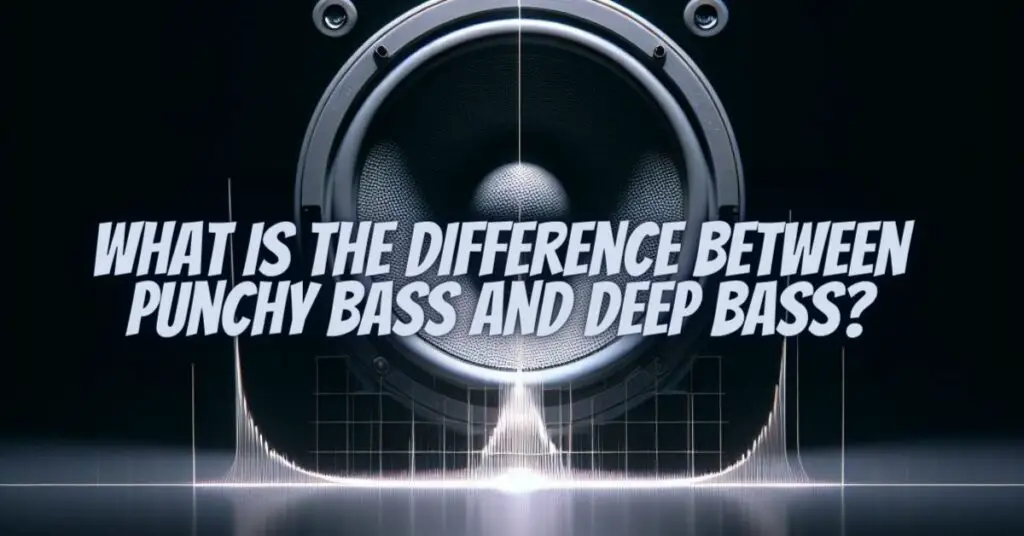Bass is a fundamental element of music, providing the low-end foundation that can greatly influence the impact and emotional depth of a track. When discussing bass, two terms that often come up are “punchy bass” and “deep bass.” These terms describe different qualities of the low-frequency sounds in a musical composition. In this comprehensive guide, we will explore the distinctions between punchy bass and deep bass, the role they play in music, and how to achieve each quality.
Defining Punchy Bass:
Punchy bass is characterized by its sharp, dynamic, and percussive quality. It has a quick attack and a short sustain, providing a sense of immediacy and impact. Punchy bass can be felt as a sudden burst of energy that punctuates the rhythm and groove of a track.
Key Characteristics of Punchy Bass:
- Quick Attack: Punchy bass notes start instantaneously, creating a sense of sharpness and precision. This quick onset adds definition to the rhythm.
- Short Sustain: The sustain of punchy bass notes is relatively brief, with the sound decaying rapidly. This short sustain allows the bass to “punch” through the mix without lingering.
- Clear Transients: Transients refer to the initial part of a sound where the attack occurs. Punchy bass has well-defined and clear transients, making each note distinct and impactful.
- Tight Low-End: The low-frequency range of punchy bass is controlled and focused, providing a controlled “punch” without excessive rumble or muddiness.
Defining Deep Bass:
Deep bass, on the other hand, emphasizes the subsonic frequencies and is characterized by a long sustain and a more sustained rumble. Deep bass is often felt more than it is heard and is essential for creating a sense of depth and power in music.
Key Characteristics of Deep Bass:
- Extended Sustain: Deep bass notes have a longer sustain, with the sound lingering and resonating in the low-frequency range. This extended sustain creates a sense of depth and weight.
- Subsonic Frequencies: Deep bass includes frequencies below 40Hz, often reaching down to the infrasound range (below the audible threshold). These ultra-low frequencies can be felt as vibrations more than heard.
- Booming Resonance: Deep bass can create a resonant and rumbling quality that reverberates through the listener’s body. It provides a visceral and immersive experience.
- Lush and Atmospheric: Deep bass adds an atmospheric and spacious dimension to music, enhancing the sense of immersion and creating a sonic landscape.
Applications in Music:
The choice between punchy bass and deep bass depends on the style and context of the music:
- Punchy Bass: This type of bass is often found in genres like pop, rock, funk, and electronic dance music (EDM). It provides a rhythmic drive, enhances groove, and punctuates musical phrases.
- Deep Bass: Deep bass is prevalent in genres like dubstep, trap, hip-hop, and ambient music. It creates a sense of space, mystery, and intensity, contributing to a cinematic and immersive experience.
Achieving Punchy and Deep Bass:
Achieving punchy or deep bass involves various production and mixing techniques:
- Punchy Bass: To achieve punchy bass, focus on using shorter envelopes in your synthesizers or shaping the decay of your bass sounds. Use compression to control dynamics and EQ to emphasize the midrange frequencies. Additionally, layering your bass with percussive elements can enhance its punch.
- Deep Bass: For deep bass, use instruments and synthesizers capable of producing subsonic frequencies. Extend the sustain of your bass notes, apply subtle distortion or saturation, and use reverb to create a sense of space and depth. Be cautious with EQ, ensuring you don’t remove too much low-end to maintain the rumble.
Punchy bass and deep bass serve distinct purposes in music, with each contributing to the overall sonic character and emotional impact of a track. Understanding the differences between these two types of bass and how to achieve them is essential for musicians, producers, and engineers. By mastering the techniques associated with punchy and deep bass, you can tailor your low-end frequencies to suit the style and mood of your music, adding depth, groove, and emotional resonance to your compositions.

